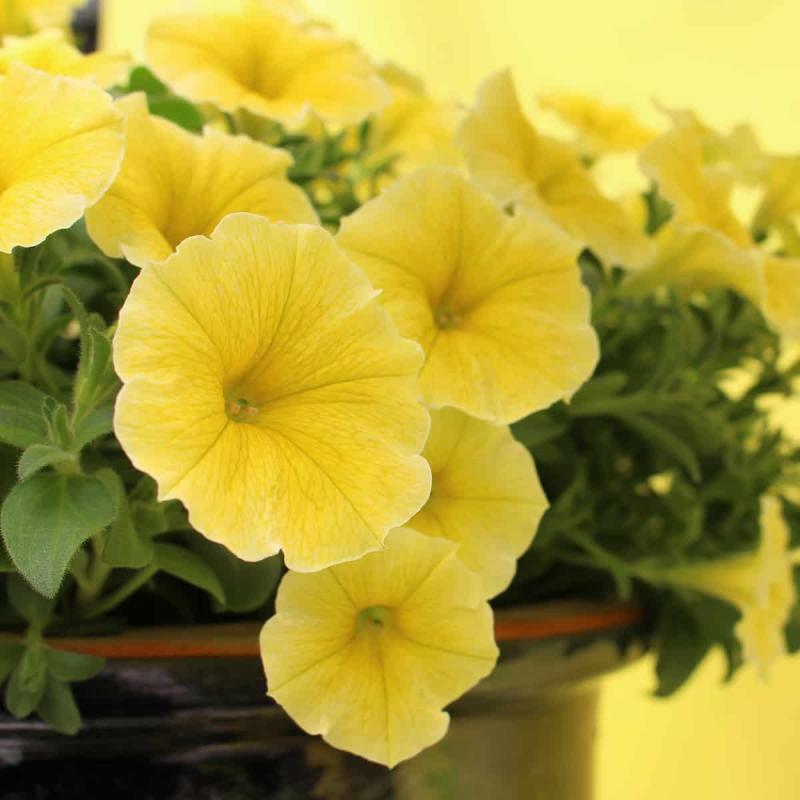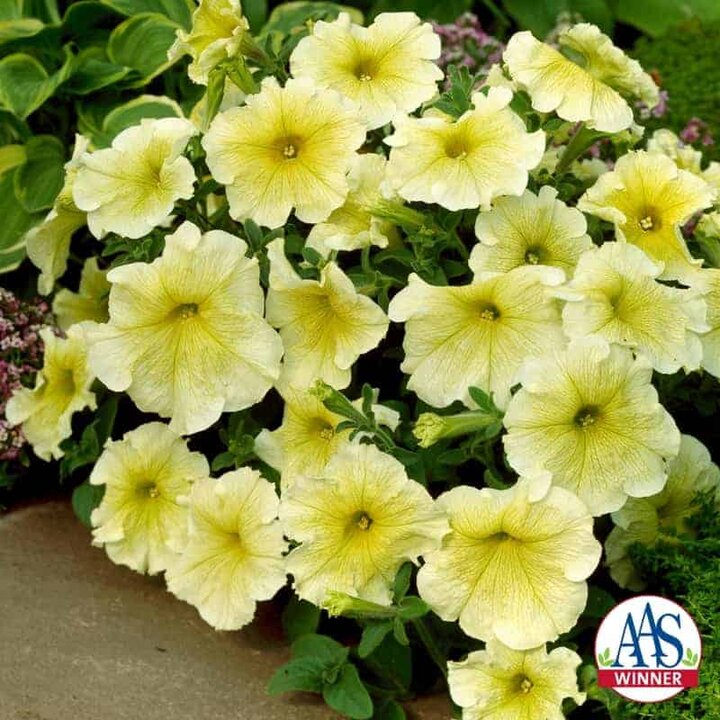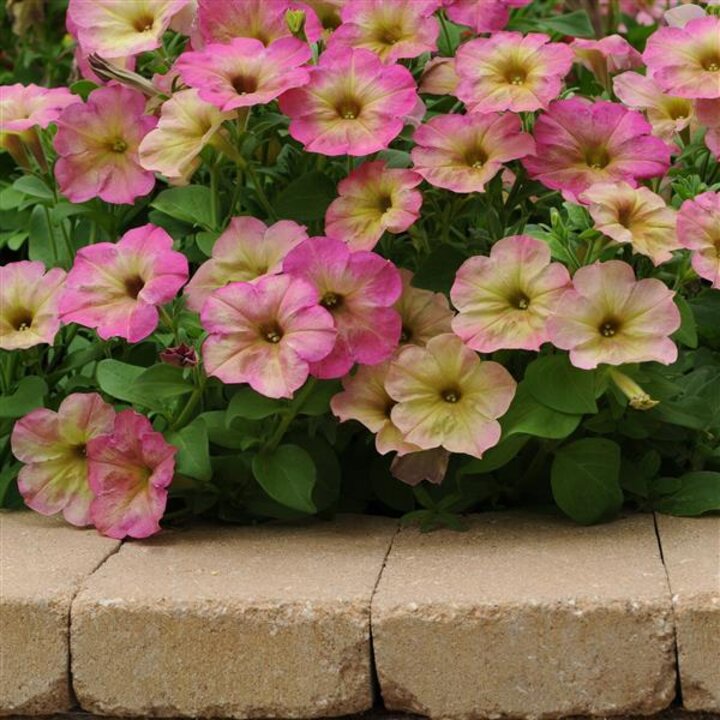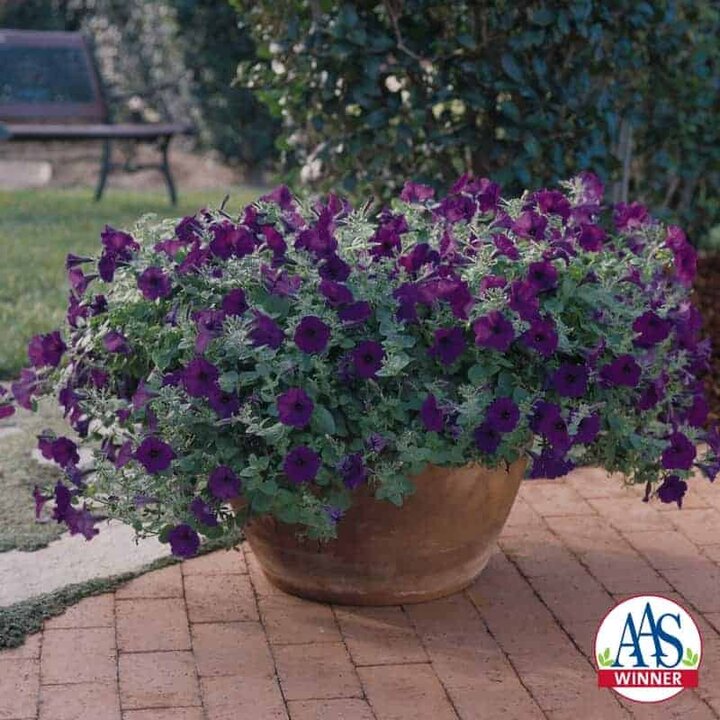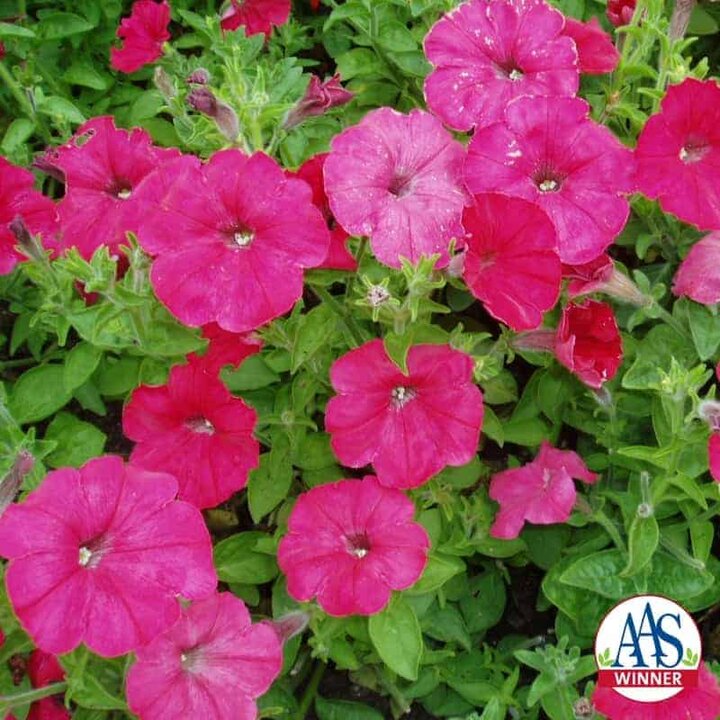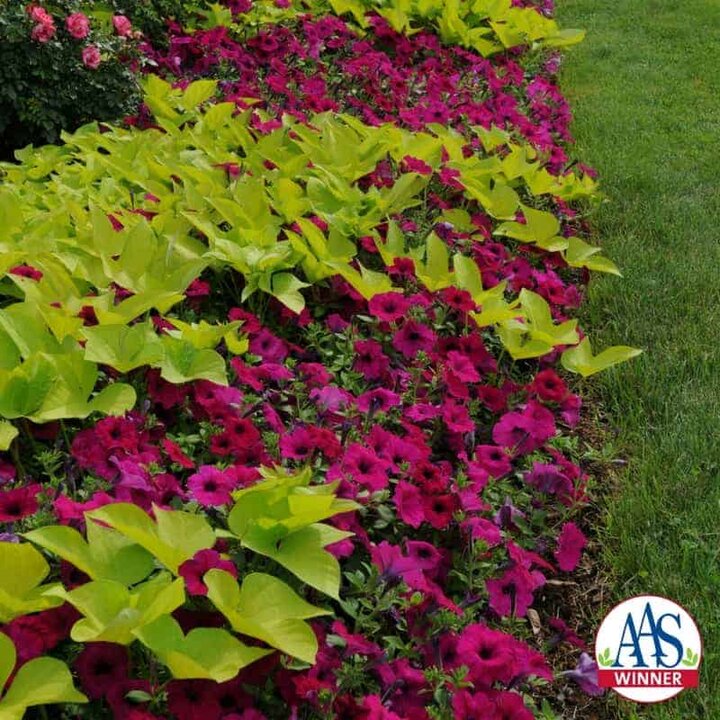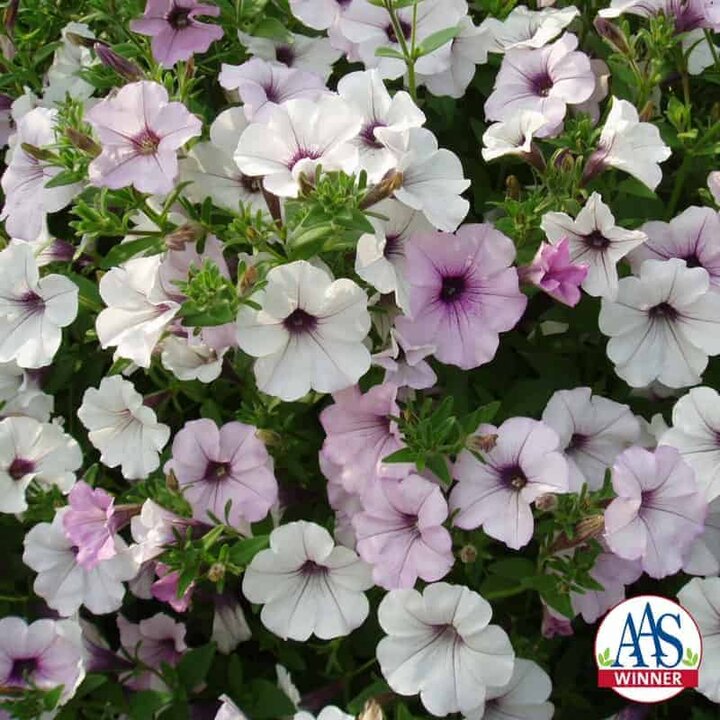Each year the National Garden Bureau selects a flower, perennial and vegetable to showcase, with plants being chosen for their popularity, variety, ease of growth, wide adaptability and versatility. This year the flower being featured is Petunia, an incredibly versatile plant available in a multitude of colors. Exciting developments in petunia breeding over the last twenty years have resulted in great new plants for the garden.
Petunias are members of the potato family, Solanaceae, and native to South America. First discovered by plant explorers in the late 1700s, modern petunias are a result of plant breeding efforts starting with development of the first hybrid petunia following World War II. Since that time breeders have developed self-branching plants with a bushy growth habit, compared to the lanky singled stemmed plants of the past, and increased weather and disease resistance. Plants are now available in a rainbow of flower colors, some with contrasting veins, edges or star patterns; bicolor and tricolored; single or double; ruffled or fringed petals.
Now petunias are also available with variegated foliage, such as 'Glamouflage Grape', with medium green leaves and a white border. If you haven't grown petunias in your garden recently, it's time to give them another look!
Petunia Types
Modern petunias can be categorized into five main groups, grandiflora, multiflora, floribunda, milliflora, spreading or ground cover, and petchoa.
Grandiflora petunias have the largest flowers, 4 to 5 inches across, with both single- and double-flowering cultivars. Flowers may be solid, striped, deeply veined, variegated or edged in a contrasting shade called picotee. Grandifloras prefer a protected location with cool, dry, sunny conditions. They dislike hot, wet or windy conditions. Plants work well in both containers and beds. 'Sugar Daddy' is a popular grandiflora petunia, with large medium lavender flowers and dark purple veins, and there are several more color variations in the 'Daddy' series. Plants in the 'Storm' series have increased weather and disease resistance. 'Prism Sunshine' is a creamy yellow grandiflora petunia named 1998 All-America Selection (AAS) winner. 'Sophistica' and 'SuperCascade' are additional grandiflora series.
Multiflora petunias are compact plants with smaller, 1 ½ to 2 inch, flowers, however, they bloom prolifically all season long. Single or double flowers are available in a rainbow of colors, often with contrasting centers or stripes. Bred primarily for wetter climates, these petunias perform admirably in adverse weather conditions especially during very hot or very wet spells. The 'Carpet' series is available in a wide range of colors with 1 ½ to 2-inch flowers on compact early blooming plants. 'Debonair' is a new multiflora series from Ball Horticultural.
Floribunda petunias resulted from crossing grandiflora and multiflora plants to combine the best characteristics of each. Like the grandifloras, they have larger single- and double-flowers, but produce an abundance of flowers like multiflora plants. They flower earlier, yet tolerate both hot and wet periods, perking up quickly after every rain shower. Floribundas are a fantastic selection for mass plantings in the landscape, and for container plantings in pots and hanging baskets. 'Madness' is a popular floribunda series with a wide variety of colors available.
Milliflora petunias have petite, 1 to 1½ inch, blossoms produced with wild abundance that cover the plant with beautiful vibrant colors. Perfectly suited to containers, hanging baskets, miniature gardens and as edging plants, these delicate beauties bloom earlier, do not stretch, add fullness and contrast of size and color when combined with larger blooming plants. 'Fantasy' is covered with light pink flowers on neat, compact 10-inch mounds of foliage.
Spreading petunias are low-growing plants only (4-6") in height that can spread up to 5 feet across. These are fast growing plants with excellent heat and drought tolerance. They require very little maintenance, and make excellent flowering ground covers. Their greatest popularity lies in the wild profusion of blooms that tumble out of hanging baskets, window-boxes and tall containers from late spring well into late fall in milder and warmer regions. 'Purple Wave', a 1995 AAS winner, was the first cultivar in this category. It was followed in later years by 'Easy Wave', 'Double Wave', and 'Shock Wave'. Supertunia and Surfina are other popular series of spreading petunias, offering vigorous, self-cleaning, well branched plants.
Hedgiflora plants are a subset of the spreading petunia type. Their growth habit is determined by their spacing in the garden. Grown close together, they form a dense, mounded hedge from 16 to 22 inches tall. With some support they act like vines growing upward an extra 2 to 3 feet. But when given plenty of space to roam, they make a floriferous groundcover spreading 2½ to 3 feet. 'Tidal Wave Silver', 2002 AAS winner, offers beautiful silvery white flowers with a darker purple center.
Petchoa is the newest petunia type, resulting from an intergeneric cross of petunia and calibrachoa thus combining the best characteristics each. Calibrachoa, commonly called trailing petunia, is actually a separate genus of plants. However the multitude of tiny flower look like small petunias, and even the foliage is similar. Calibrachoa plants have been very popular, in their own right, in the last 10 to 15 years with attractive trailing foliage and many colorful flowers. They bloom well during summer's heat, providing color all season. Look for Petchoa 'SuperCal', which delivers unique colors, many small sturdy blossoms and non-sticky trailing foliage to overflow hanging baskets.
As I said, it's time to look at petunias again! Try them in containers, hanging baskets, or as a ground cover in your garden. Visit All-America Selection winning petunias for more great petunia choices.
Source: National Garden Bureau.
Images
- 'Prism Sunshine' petunia
- 'Debonair Dusty Rose' petunia
- 'Wave Blue' petunia
- 'Fire Chief' petunia
- 'Purple Wave' petunia
- 'Tidal Wave Silver' petunia
